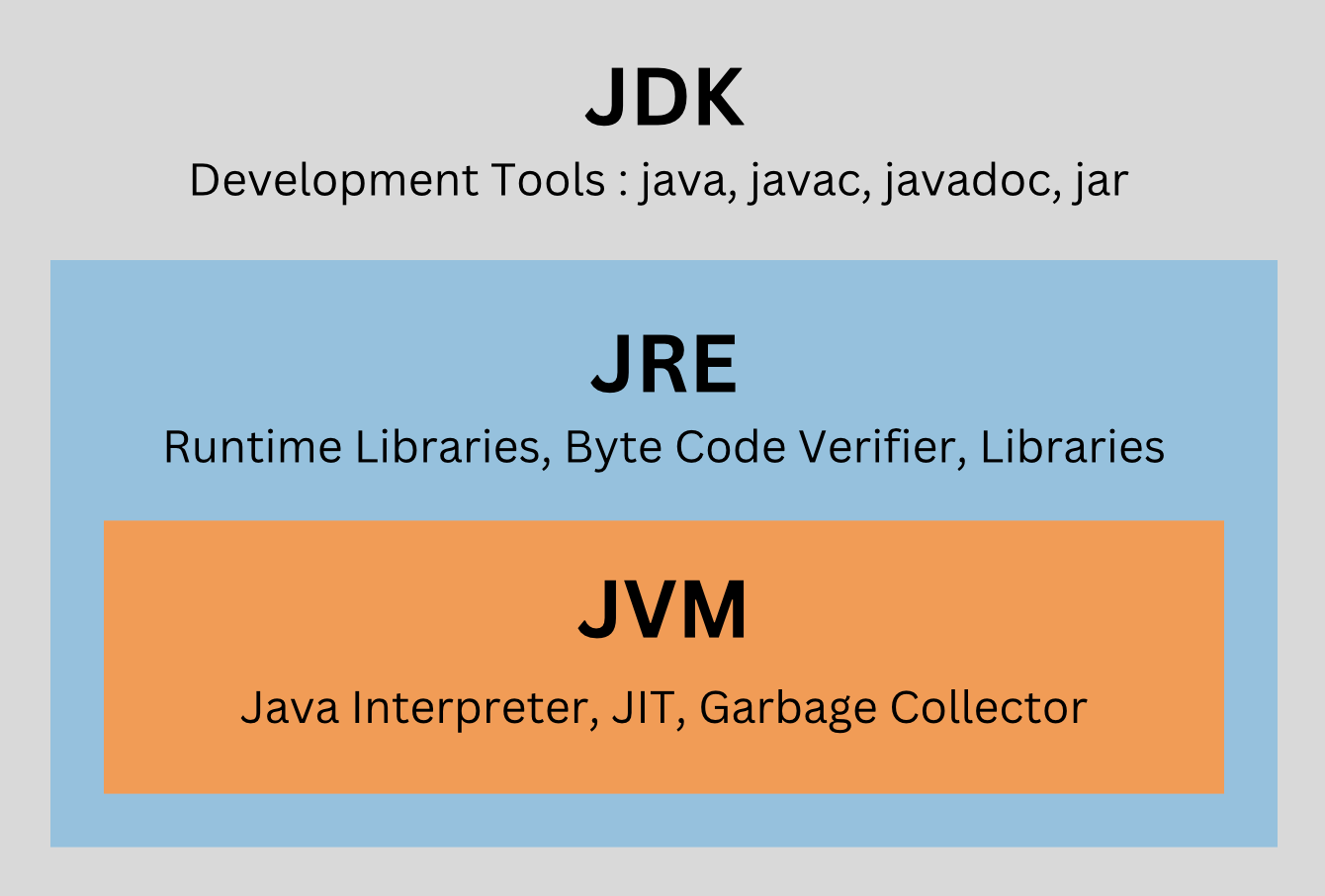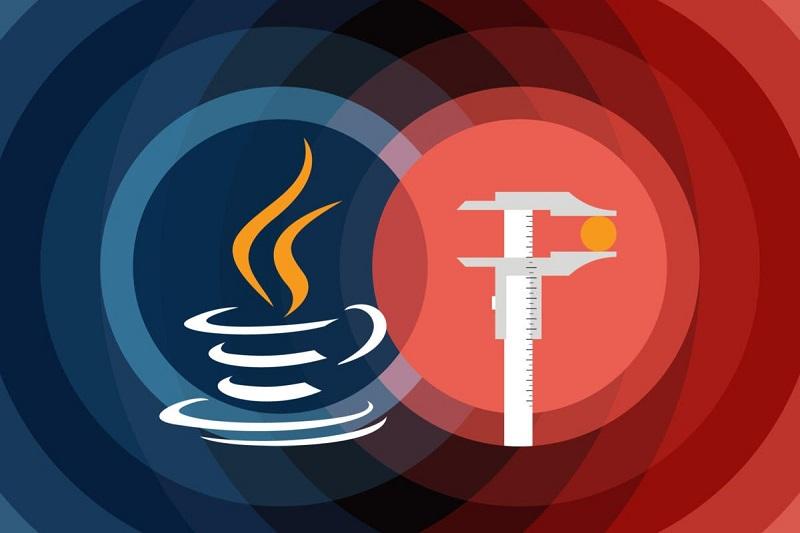What Is Java Runtime Environment?
Java Runtime Environment (JRE) is the software Java programs that must run correctly.
Java is a computer programming language that many current web, enterprise, and mobile applications are written using. JRE is the underlying technology that communicates between the Java application and the operating system.
This software is a translator and facilitator, providing all the resources the applications need.
When you write programs using Java, you can run the program on any operating system without significant code changes.
Why is JRE important?
A software program requires a runtime environment that provides access to memory and other system resources, such as program files and dependencies.
In the past, most software used the operating system directly as the runtime environment. The problem with the above method was that the developers had to write different codes for each operating system to run their programs on that operating system. Java Runtime Environment technology was invented as a solution to this problem.
JRE is one of the three critical components of the Java platform, which is required to successfully implement any application based on the Java programming language. Java Development Kit (JDK) and Java Virtual Machine (JVM) are other essential components in this field.
Java development kit
The Java Development Kit (JDK) is a set of software tools that you can use to develop Java applications. Download and install it in the development environment to benefit from the above kit. In this context, you should consider the correct JDK version compatible with the desired Java version. For example, Java Standard Edition or Java SE requires the JDK.
Java virtual machine
Java Virtual Machine (JVM) is the Java Development Kit software name that executes Java program line by line. Developers configure JVM settings to manage application resources when running a Java application. For example, you can change JVM memory settings and check how much internal memory your Java programs use at runtime.
The role of JRE(Java Runtime Environment) in the Java programming language
The JRE combines the Java code you create using the JDK with additional built-in code called libraries. It then creates a JVM instance or local copy that runs Java programs. JVMs are available for several operating systems, and the JRE produces a copy of your Java code that can be run on different types of Java virtual machines. In this way, JRE facilitates platform independence for Java applications. More precisely, you can write your applications once and run them anywhere.
What is the difference between JRE, JVM, and JDK?
The JDK is a software layer on top of the JRE that includes a compiler, a debugger, and other tools commonly found in any software development environment. In the JDK, you write code in an English-like manner. The JDK compiles it and passes the bytecode to the JRE. In contrast, the JRE contains class libraries, support files, and the Java Virtual Machine. These software components are used to execute byte code on any device.
How does JRE work?

The Java Development Kit (JDK) and JRE interact to create a stable runtime environment that runs Java program files on any machine. The Java Runtime Environment runs on the operating system and provides additional Java-specific resources. The JRE uses the following three main components for this purpose.
ClassLoader
- All Java programs reference multiple class libraries. They simplify the work of Java developers by providing built-in methods mainly written for ordinary and mundane tasks such as taking input from users, displaying output to users, etc. Java class libraries contain pre-written code that you can call when needed. The Java ClassLoader dynamically loads all required class files into the Java Virtual Machine (JVM) upon request.
Bytecode verifier
- The Java Development Kit has a compiler that converts your English-like code into a machine language version called Java bytecode. They carefully check the validating bytecode in the JRE format before loading it into the Java Virtual Machine. For example, the JRE will not load the class file if the code violates system integrity or access rights.
Interpreter
- After loading the bytecode, the Java interpreter creates a Java Virtual Machine instance that executes the Java application on the underlying machine layers.
What are JRE(Java Runtime Environment) components?
Apart from the main components of the Java Runtime Environment, several other software components help run Java programs more efficiently. Among the essential features in this field, the following should be mentioned:
Development tools
- The JRE includes development tools such as the User Interface Toolkit that you can use to improve the quality of your applications. Among the essential components in this field, the following should be mentioned:
Java 2D
Java 2D is an application programming interface (API) that you can use to draw 2D graphics and create rich user interfaces, games, animations, and special effects in Java.
Swing
- Swing is a lightweight graphical user interface (GUI) that offers flexible and user-friendly customizations.
Abstract Window Toolkit
- The Abstract Window Toolkit is a graphical user interface that you can use to create user interface objects such as buttons, windows, and scrollbars.
Deployment solutions
The JRE includes technologies that simplify releasing software changes to application users. These technologies also provide advanced support for updating applications. Deployment technologies such as Java Web Start and the Java Plugin are included in the JRE installation. These technologies simplify application activation and provide advanced support for future JRE updates. Below are some examples of these tools:
Java Web Start
- With Java Web Start, you can launch full-featured applications with one click from your web browser.
Java plugin
- A Java plugin connects popular browsers to the Java platform so you can run your website applets in a desktop browser.
Language libraries and tools
A collection of Java class files is called a Java package. The JRE contains several Java packages that support versioning, management, and monitoring. Among the essential packages in this field, the following should be mentioned:
Collections framework
- The Collections framework is a single architecture that includes interfaces to improve storing and processing of application data.
Preferences API
The Preferences API allows multiple users on the same machine to define their group based on application preferences.
Logging
- Reporting packages generate reports for troubleshooting security failures, performance problems, and configuration errors.
Java Archive
- Java Archive (JAR) Java Archive is a platform-independent file format that allows you to package multiple files, reducing the file size of your application and significantly improving the download speed.
Integration libraries
The JRE includes several integration libraries that help developers create seamless data connections between services and applications. Below are some examples of libraries:
Java IDL
- The Java Interface Definition Language (IDL), based on the Common Object Request Broker Architecture (CORBA), supports distributed data objects—objects that interact on different platforms across a network. For example, Java IDL allows objects written in Java to interact with those reported in another language, such as C, C++, or COBOL.
Ability to connect to Java database
Developers use Java Database Connectivity (JDBC) to write programs that can access databases, spreadsheets, and remote files.
Java Naming and Directory Interface
- The Java Naming and Directory Interface is a directory service that allows clients to create portable applications that retrieve information from external databases using naming conventions.

